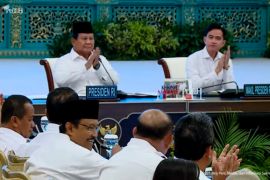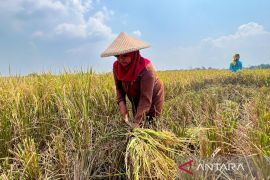"Urban farming (in Nusantara) must be arranged neatly and designed in such a way that it can beautify the city and can function to realize family food security," Lenggono stated in Sepaku District, East Kalimantan, on Friday.
He elaborated that urban farming in the capital city will be applied to home yards and rooftops and with the help of hydroponics techniques to facilitate meeting the household food needs, such as for vegetables, fruits, tomatoes, and chili.
Lenggono expects that the implementation of urban farming in Nusantara can meet 30-40 percent of the food requirements there.
He noted that urban farming can be applied in almost all places in the city area, starting at the Ministerial House Complex in the Central Government Core Area (KIPP), rooftops, green open spaces, and house yards.
In realizing food security, the OIKN is also determining the protected lands that will be used for sustainable agriculture (LP2B).
Lenggono stated that the determination of LP2Bs starts from planning, inventory, identification, research, determination, development, and community development to finally land management.
"It is predicted that the need for LP2B in the capital city reaches 84.25 thousand hectares until 2045, with nine commodities (to be planted) in LP2Bs," he stated.
The nine commodities, among others, is corn, which needs an area of 19,008 hectares of LP2B and a targeted productivity of 3.24 tons per hectare.
Lenggono explained that the figure aims to meet the corn consumption of 100,270 tons per year and to support Nusantara's population that is expected to reach 1.9 million people in 2045.
Another commodity is rice, with a requirement of 22.45 thousand hectares and projected productivity reaching 9.87 tons per hectare, to meet consumption of 221,630 tons of rice per year.
Related news: OIKN explores cooperation with China's Shenzhen in city development
Related news: OIKN invites artists to develop art, culture for IKN
Translator: M Ghofar, Kenzu
Editor: Rahmad Nasution
Copyright © ANTARA 2023












